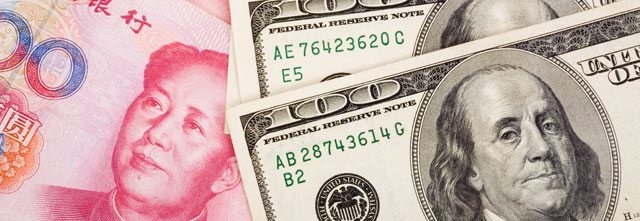If it is good to be rich, it is just as good to be a business that caters to the sector. The luxury apparel market is alive, well and growing worldwide.
“The mood is positive,” says Planet Retail’s Isabel Cavill, senior retail analyst. “The key driver of growth is ultimately from emerging markets as well as affluent U.S. shoppers.”
Bain & Company partner Erika Serow, luxury and apparel expert, says it is important to remember that here in the U.S., the 2011 luxury market equaled pre-recession totals.
“In context, we expect to see a return of moderated growth in mid-single digits, 3%-to-5%.”
The Robb Report is banking on high-end apparel performing well in 2012, says Brett Anderson, senior vice-president, editor in chief.
“Our optimistic outlook is reflected in our plan to expand our editorial coverage of this particular category over the next year by introducing a new front-of-book section devoted to style,” Anderson says.
The average upper-income shoppers (those earning $75,000 or more) in the U.S. spent over $900 a year on apparel in 2011, according to the Cotton Incorporated Lifestyle MonitorTM Survey. Those earning $100,000 or more spent $975, while those making $200,000 or more spent about $1,073 on apparel.
- Those making between 75k and 99k spent $830
- Between 100 and 199k spent $958
- 200k or more spent $1,073
Across the globe, the ranks of Chinese consumers with disposable income only continue to grow. According to the Cotton Incorporated and CCI Chinese Consumer Survey, Chinese upper income shoppers are those making USD $925 or more per month. High-income consumers there spend $373 on apparel yearly.
[quote]Planet Retail’s Boris Planer, research director, says the discrepancy between U.S. and Chinese incomes highlight how terms like “upper income” are relative.
“This has implications for fashion designers and retailers who, in emerging Asia and Latin America, will continue to deal with a market of cities, rather than countries.”
In the U.S., high-earners prefer shopping at chains (63%), department stores (58%), mass merchants (48%), specialty stores (46%) and the Internet (30%), the Monitor survey finds.
Meanwhile, Chinese luxury customers shop in department stores (43%), specialty shops (41%), chain stores (32%) and hypermarkets/warehouse clubs (22%), according to the Chinese Consumer survey.
Since luxury retail in the U.S. is well established with a wide and deep selection of brands and stores, the Chinese and South American tourists flock here. Their spending has been important to major cities like New York, Los Angeles and Las Vegas, Serow says. Now, their influx is becoming stronger in cities like Miami and Chicago. Even though more luxury stores opened in China than anywhere else last year, taxes are so high that many Chinese consumers continue to shop elsewhere.
“The Chinese are spending more than 50% of their luxury dollars outside of China,” Serow says, pointing out room for growth in apparel. “Chinese consumers are much more heavily weighted toward beauty and accessories, so their penetration in apparel is lower both in China and out.”
Serow says Bain expects China’s luxury apparel market to grow at an annual pace of 20%-to-30% over the next two to three years.
“Apparel has a long way to go there. It’s only 14% of China’s luxury business, versus about 25% of luxury business elsewhere. And Brazil is interesting because it was a 2.3 billion euro market in 2011, but it’s growing considerably. Apparel is 6% of their total luxury sales today.”
The Wall Street Journal reports Gucci’s owner PPR SA is planning 110 store openings in its luxury division this year, half in Asia, the rest across the globe. Meanwhile, Yves Saint Laurent and Balenciaga are getting new flagships in Paris. And the group plans to open four units in Brazil.
As far as what attracts U.S. luxury consumers, quality (94%) and durability (90%) beat out style and trendiness (86%) as factors important to apparel purchases, the Monitor finds. Serow says luxury apparel accounts for 20% of the total luxury market, with shoppers preferring to buy one item that stands the test of time, rather than several trendy pieces.
Cavill agrees. “Within the apparel category, shoppers still tend to go for items that are high value and lasting, so high value products in the form of jackets, etcetera, are likely to be key sellers this year.”
Brand names always play a part in consumer psychology, Anderson says, but for the wealthiest Americans, quality is the most important factor in determining what they buy.
“They are less concerned with trends, because they view themselves as the trendsetters. Classic style and durability are key when it comes to their clothes. That’s why certain brands, such as Kiton, Hermes, Louis Vuitton or Ermenegildo Zegna resonate so strongly; they’re about quality of construction and an enduring aesthetic.”
The majority of upper income U.S. (81%) and Chinese (79%) consumers prefer their apparel be made of cotton and cotton blends, the Monitor and Global Monitor surveys show. Additionally, both U.S. (82%) and Chinese (74%) upper-income shoppers say cotton and cotton blends are best suited for today’s fashions.
If there is any weakness in the luxury market, it is among the aspirational “mass affluent”: those with high incomes, but not high net worth.
“In 2009, these mass-affluent consumers basically got up from the table; now they’re coming back,” Anderson says. “Should the economic poles shift again, we may see these consumers run for cover. But the ultra-high-net-worth consumer will continue to buy, even during times of financial volatility.”
–Catherine Schetting Salfino
